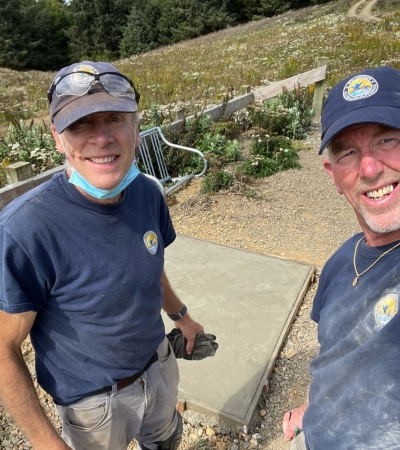Location
694 Beech Hill Lane
Hardeeville, SC 29927
United States
Volunteer Position Overview
About This Position
Savannah Coastal Refuges Complex is recruiting resident volunteers (RV) to be stationed at one of two RV pads located at the Savannah National Wildlife Refuge. Volunteers can be individuals or couples who are willing to provide 24 hours of service per week in exchange for the RV site and hookups. We require a 3-month minimum/6-month maximum commitment (anywhere in-between, schedule-dependent.) Both large pads are located together, near the Visitor Center/Headquarters, and are paved with water, sewage, and 30/50 amp electricity. A communal laundry house sits between the two pads with high-efficiency washer and dryer. Wifi is also provided (although not guaranteed) and cellular service is fairly good and consistent. The Visitor Center is located just 7 miles from historic downtown Savannah, Georgia, and about 30 minutes to the beaches on both Hilton Head Island, SC and Tybee Island, GA.
RV volunteers at Savannah NWR are involved in all aspects of the Visitor Services program and are directly supervised by the Visitor Services Manager. The majority of work is project driven, depending on what we have going on during the time a volunteer is here. We also expect the RV volunteers to open and close the refuge Visitor Center on the days they work, and cover any open Visitor Center front desk shifts not covered by a local volunteer. There is no guarantee of Visitor Center work (other than opening and closing) on any given day due to the fact that we have a cadre of local volunteers who typically cover that need. Volunteers should expect to be working outdoors a good majority of the time, and if volunteering during the spring thru fall months, temperature and humidity are high in our area. If working in those conditions would be an issue, we do not recommend volunteering here during the summer months. Most of the work volunteers are involved with takes place at Savannah NWR, but because this is a refuge complex (seven refuges total), there are typically opportunities to do work at some of the other refuges during your stay. The most important qualification a volunteer can have is flexibility...we are a small staff with a LOT of work to do so priorities and work assignments can change quickly and often. We also have a lot of fun!
Some regular RV volunteer duties during the May - October period include:
Mowing
Weedeating
Pressure washing public facilities
Washing vehicles
Light maintenance
Opening/closing Visitor Center
Tending to Visitor Center restrooms (paper products, trash, light cleaning)
Stocking trail guides
Monitoring wildlife drive and other trails for trash
Assisting with environmental education programs
Stories About Volunteering
Other Ways to Work with Us
Are you looking for something different than a volunteer opportunity? The Fish and Wildlife Service employs around 9,000 people nationwide and offers great internship opportunities every year.







